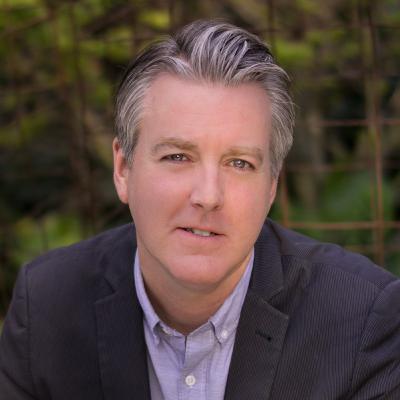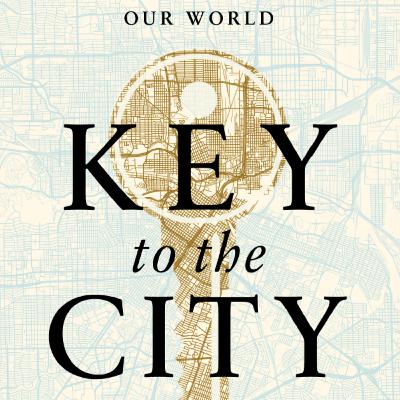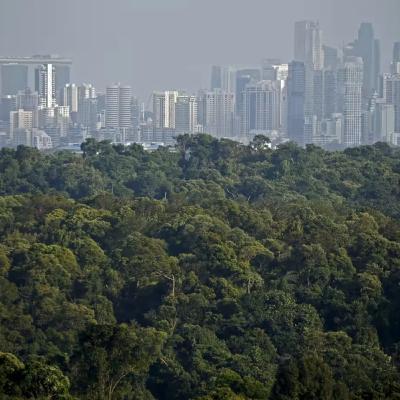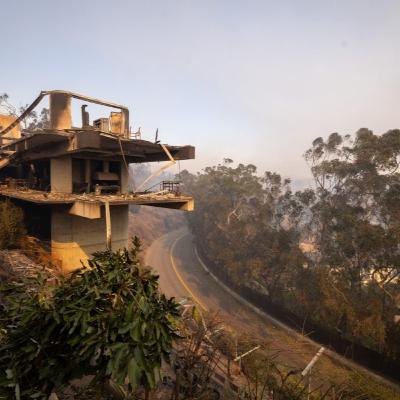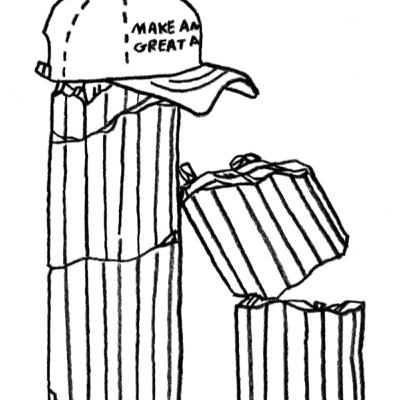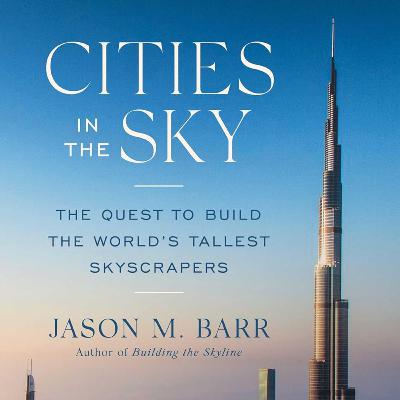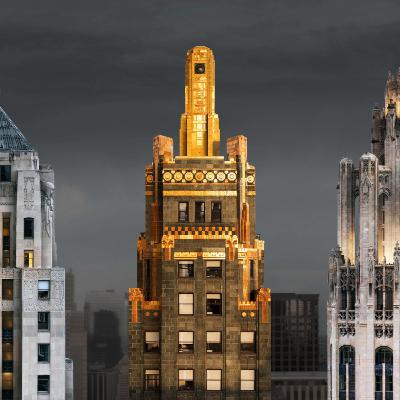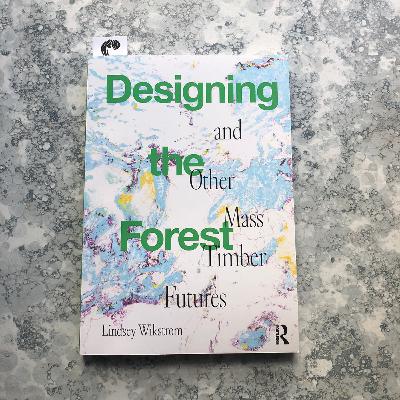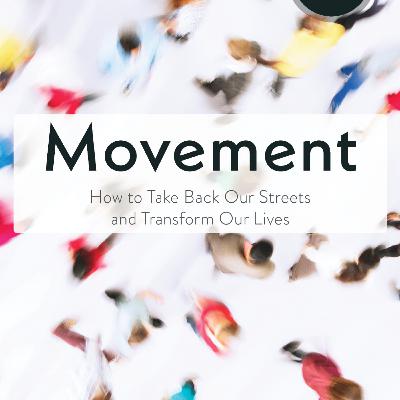Discover Unfrozen
Unfrozen

71 Episodes
Reverse
Rem Koolhaas is nothing if not enigmatic, which makes him and his first major built work, the Villa dal’Alva, Paris (1990), an ideal first subject of the “Gumshoe” series of architectural mysteries. Cutting through the conventions of academic jargon and trade press, The House of Dr. Koolhaas reopens the “cold case” of Koolhaas and examines evidence in a pulp-detective novel format. Unfrozen turns the lamp back on writer/editor team Francoise Fromonot and Thomas Weaver.
--
Intro/Outro: “Beancounter,” by the Cooper Vane
--
Discussed:
Gumshoe Architectural Mystery Series
Thomas Weaver (AA Files)
Villa d’Alva, OMA
S, M, L, XL
Luis Bunuel
City of Glass by Paul Auster
Ways of Seeing by John Berger
Aramis, or the Love of Technology by Bruno Latour
The Purloined Letter by Edgar Allen Poe
Mannerism
Madelon Vreisendorp with Teri Wehn-Damisch: The Film of Delirious New York
Countryside, The Future
Dali’s paranoiac-critical method
Le Corbusier’s Villa Savoye
Next up: Oscar Neimayer’s Communist Party Headquarters, Paris, by Littell Shaw
Then: The Parthenon
Then: Case Study House by Craig Ellwood
Poelzig’s I.G. Farben Building, Frankfurt
Raymond Chandler
James Ellroy
The Unfrozen squad descends on Venice to experience inperson the full blunt force of the Biennale. Special guests include: Carlo Ratti, the curator of the 19th Architecture Biennale, Anastasia Sukhoroslova, CEO of All Things Urban, and Michele Champagne, graphic artist and contributor to Volume magazine.
--
Intro/Outro: “Bounder of Adventure” by The Cooper Vane
Our guest on this episode is Christopher Hawthorne, the Senior Critic at Yale University’s School of Architecture. His previous roles include architecture critic of the Los Angeles Times, and Chief Design Officer of the City of Los Angeles. His current mission is to assemble the Speaker’s Corner at the 2025 Venice Architecture Biennale. Unfrozen hears his unique perspective as both critic and exhibitor.
--
Intro/Outro: “Elevator,” by The Cooper Vane
--
Discussed:
2025 Venice Architecture Biennale: “Inteligens: Natural, Artificial, Collective” – Carlo Ratti
Speakers’ Corner / Re-staging Criticism series, part of the GENS Public Program
- Florencia Rodriguez, Director, School of Architecture, University of Illinois Chicago
- Mark Lee, Sharon Johnston of Johnston Marklee
- Inspiration: “Vincent Scully: Architecture, Urbanism, and a Life in Search of Community,” by A. Krista Sykes
- 9 May: “Exhibition as Critical Vessel”
o Florencia Rodriguez, Moderator
o Lesley Lokko, 2023 Biennale curator
o Aric Chen
o Pancho Diaz
o Sarah Herda
o Michael Meredith (MOS) > Building with Writing
- 10 May: Conversation on L.A. Fires
o Michael Maltzan
o Alejandro Haiek Coll
o Florencia Rodriguez
11 May:
o Kate Wagner
o Samuel Medina
o Sam Jacob
o Shumi Bose
1980 Venice Architecture Biennale – The Presence of the Past - Paolo Portoghesi
- Strada Novissima, feat. Rem Koolhaas, Frank Gehry, Arati Isozaki, Robert Venturi, Denise Scott-Brown
- Teatro del Mundo, Aldo Rossi
- Critic’s Corner, feat. Vincent Scully, Charles Jencks, Kenneth Frampton & Christian Norberg-Schulz
Why “The Brutalist” Isn’t Really About Architecture
Kazuyo Sejima
Writing About Architecture - Alexandra Lange
Caught practicing without a license: Frank Lloyd Wright and Thomas Jefferson
International Committee of Architecture Critics
Salon de Mobile
Ada Louise Huxtable
You Have to Pay for the Public Life, by Charles Moore
Complexity and Contradiction in Architecture, Robert Venturi
Charles Jencks Foundation
A quick one before we’re away. Dan and Greg sum up theirsprings and get ready for spritzes and socializing with smart people in at the 2025 Venice Biennale.
--
Intro/Outro: “Bounder of Adventure,” by The Cooper Vane
--
Discussed:
Going Underground -> The Space Below w/ James Parakh
· Toronto PATH
· Montreal RESO
· Chicago Pedway
· Minneapolis Skyway
· Houston Tunnels
· Oklahoma City Underground
· Hong Kong Central Elevated Walkway
Zohran Mamdami –Make the Subway Great Again
Smart City Expo, New York City
Business Facilities Live eXchange, New Orleans
Curbivore, Los Angeles
Jonah Bliss
Joshua Harris, Fordham University
Marchetti’s constant
Zipline
Austin Baker Tilly Conference
CosMc’s
National Association of Realtors survey
Waymo
RoboCop
Sidewalk Toronto
Downstate IL secession movement
Snow Crash – Neal Stephenson, feat. Mr. Lee’s Greater Hong Kong
Paul Romer
Charter Cities
The Voluntary City - David T. Beto, Peter Gordon and Alexander Tabarrok
How to Run the World - Parag Khanna
Hell on Earth – The 30 Years’ War Podcast
The Network State - Balaji Srinivasan
Global Parliament of Mayors / Ben Barber
Polarization of reality > revenge of sovereignty
Praxis: Med Charter City > Greenland feat. Steven Harper
The evermore-relevant Hidden Globe episode
Exit, Voice and Loyalty - Albert O. Hirschman
Patri Friedman
The lost art of imagining the future
“My Brain Finally Broke,” - Jia Tolentino in The New Yorker
Bruce Sterling – Atemporality
Sara Bronin is an architect, attorney, policymaker, and professor at Cornell University. Born and raised in Houston, the only large US city without zoning, previously served as the Chair of the Planning and Zoning Commission of Hartford, Connecticut. Her book is called Key to the City: How Zoning Shapes Our World, and she joins Unfrozen to demystify the why and wherefore of what you can, cannot, and “must” build in cities all over the US.
--
Intro/Outro: “Elevator,” by The Cooper Vane
--
Discussed:
- How large-lot mandates contribute to the epidemic of loneliness
- YIMBY prevails in Arlington and Alexandria, VA
- Re-zoning in Minneapolis, Seattle, Portland, OR, and Hartford
- Supreme Court ruling on Shelley vs Kraemer, 1948, outlawing racially restrictive covenants
- Houston’s affordability comes at the cost of flood zones and unpleasant adjacencies
- Gulfton neighborhood
- El Principe Azul nightclub
- Effects of Parking Provision on Automobile Use in Cities: Inferring Causality
- Albany Avenue rezoning and corridor improvements, Hartford
- Denise Best
- Form-based code
- Washington Commanders’ new DC stadium
- Code overhauls in Hartford, Charlottesville VA, and Boston
- Bronin trashes Boston’s zoning code
- Pittsburgh spends $5.8 million on zoning consultant
Scott Francisco is the founder and director of Pilot Projects, a systems thinking and design consultancy that co-creates sustainable solutions to complex challenges in global systems, cities and the natural environment. On this episode of Unfrozen, we discuss the Cities4Forests initiative, which aims to more closely align the environmental and economic goals of cities and the forested lands on which they depend.
--
Intro/Outro: "Elevator," by The Cooper Vane
--
Discussed:
Wood @ Work, NYC, October 2015
Cities4Forests
Partner Forest Program
World Resources Institute
Mass Timber Tipping Point Report
Alliance of Francophone Mayors
Net zero
Scope 1, 2 and 3 emissions
Nordic Structures
Montreal Protocol 1987
COP 15 Montreal, 2022
COP 21 Paris Agreement, 2015
COP 26 Glasgow, 2021
COP 28 Dubai, 2023
COP 30 Belem, Brazil:Design for activation: A Mass Timber, Conservation Timber Pavilion, Floating on the Amazon, with Hammocks!
Declaration for Forests and Cities
Alec Fitala, DOM, rainforest products > Hearts of Palmpasta
Tucked away in a hollow some 20 miles south of Atlanta, theTown of Trilith contains multitudes: possibly North America’s largest purpose-built film and television production studio, a steak/cigar bar, bucolic surrounds, “loft”-style living and cornhole games on an ersatz main street – everything, surely, somebody would want out of a hometown. But who? Kyle Holtan reports.
--
Music: “Elevator,” by The Cooper Vane
--
Discussed:
Congress for the New Urbanism
Serenbe, GA
Pinewood Atlanta Studios (now Trilith Studios)
Megalopolis
Dan Cathy & River’s Rock LLC
How The Chick-Fil-A Billionaire CEO Plays A Part In Your Favorite Marvel Movies
Trilithons
Georgia Guidestones
Mesa del Sol
The Buckhead Succession Movement
Stockbridge, GA vs Eagle’s Landing
Silvercup Studios
Kaufman Astoria Studios
Over the past 20 years, Gabrielle Bendiner-Viani has taken the question, “what, and who is the city for?” directly to the streets of Prospect Heights in Brooklyn and Mosswood in Oakland, asking locals to take her to the places that matter to them. A visual urbanist, co-founder of the interdisciplinary studio Buscada, and widely exhibited photographer, Bendiner-Viani holds a doctorate in environmental psychology from the Graduate Center, CUNY.
--
Intro/Outro: “Elevator,” by The Cooper Vane
Discussed:
Prospect Heights, Brooklyn, NY
Mosswood, Oakland, CA
Prior urbanists of “placework”:
- Jane Jacobs
- David Harvey – The Right to the City
- Henri Lefebvre – Le Droit à la Ville
- Kevin Lynch – Image of the City
- Christopher Alexander – A Pattern Language
- Mindy Thompson Fullilove
Diana Lind – The Human Doom Loop
The Anti-Social Century, Derek Thompson, The Atlantic
Contested City, Gabrielle Bendiner-Viani
Between, and sometimes within, the boundaries of nation-states are thousands of liminal zones which are neither here nor there, and their rules are different from those of the countries in which they are physically located. Author Atossa Araxia Abrahamian calls this “The Hidden Globe,” and chronicles the in-between places where money, art, luxurygoods, and stateless prisoners spend time in limbo. At a time of rising nationalism, tariff wars, and mass deportations, these places are on the ascendant. What are they like? Why are they there? And what’s next? Join this episode ofUnfrozen to find out.
--
Intro/Outro: “Elevator,” by the Cooper Vane
--
Discussed:
- The Geneva Freeport
- Svalbard
- Tenet
- The Cosmopolites
- Henley & Partners
- Dubai International Finance Center (DIFC)
- Mark Beer, Zone Man
- Estonia e-residency program
- Greenland, Guantanamo Bay, and the Panama Canalare also zones
- Freedom Cities
- Boten, Laos
- Laos-China Railway
- Golden Triangle Zone
- The Mont Pelerin Society
- Extrastatecraft by Keller Easterling
- Paul Collier
- Paul Romer and the Charter City
- Mission Impossible: Ghost Protocol
- Hudson Yards
- Smoot-Hawley Tariff Act
- U.S. Rep Jake Auchinsloss (D – MA) infavor of charter cities
- Citizenship by investment = passports for sale:here to stay
- Praxis: “The startup nation we deserve today”
Amidst the unprecedented destruction wrought by the multiple fires that swept across Southern California in January 2025, there are opportunities, and causes for optimism that we can build back, better than before. Among these is the prospective role of prefabricated construction,
which can be 30 to 50 percent faster than traditional methods. Steve Glenn, CEO of Plant Prefab, shares his thoughts on the role prefab can play in reconstruction.
--
Intro/Outro: “Elevator,” by The Cooper Vane
--
Discussed:
Bloomberg CityLab: Los Angeles Fire Victims Turn to Prefab Homes for Quick Builds
Regulations:
California Coastal Commission
CEQA
CALGreen
Title 24
HUD Code (Manufactured Homes)
Wildland Urban Interface (WUI) Zones
Woolsey fire, 2018
Architecturally significant buildings (at least 32) lost in the fires
The inauguration of the 47th president of the United States takes place on January 20. What are the implications of Trump 2.0 on the built environment, design and cities? Inspired by the eponymous, omnibus crucible of dread in the New York Review of Architecture, we huddled with the best and brightest design critics we know, Kate Wagner (The Nation / McMansion Hell) and Zach Mortice (Bloomberg CityLab) to try to come to grips with the oncoming MAGAlopolis.
===
Intro/Outro: “Elevator,” by The Cooper Vane
==
Discussed:
Will They Build the Wall and its Ancillaries?
Trump Will Not Make Architecture Great Again
Make Tartaria Great Again
Journalists needed, maybe more than architects right now
The Harold Washington Library is not a relic of an advanced
19th century civilization
Will there be a Super State Fair?
Trump administration aesthetic = BioShock Infinite
Will the FBI Edgar J. Hoover Building (C.F. Murphy, 1975) be moved or demolished?
The Trads Have It
Tommy Tuberville: California will get Federal aid if “conditions
are met”
Scott
Turner: Putting the CHUD in HUD
Jason Tester: Insurrection
Post-fire price gouging in L.A.
Suspending environmental regulations in California to build the same thing over again
It’s housing affordability, stupid – look at Canada
What happened to the rent cap?
We’re a few election cycles away from “progressive” mayors
actually stepping up to the mic
“The future is about old people, in big cities, afraid of
the sky.” – Bruce Sterling
Hoovervilles > Trumptowns
DOGE = Department of Graft Enhancement
Kevin Kelley, a self-described “attention architect,” is aco-founding partner of design firm Shook Kelley and author of Irreplaceable: How to Create Extraordinary Places That Bring People Together. In our digitized world of ghost commerce, he believes there is still a place for real places, and that it is incumbent on architects to stop looking down their nosesat retail, the essential lubricant of urban life, and start designing places that matter.
--
Intro/Outro: “24 Hour Limes" by The Cooper Vane
--
Discussed:
Bass Pro Shops at the Memphis Pyramid
Against 15-Minute Delivery
“The Bonfire Effect,” courtesy Loxahatchie, Florida
Participation mystique, as per Jung, as per Lucien Levy-Bruhl
“TheAnxious Generation” by Jonathan Haidt
“Harvard Guide to Shopping” by Rem Koolhaas et. al.
Prior Unfrozen commentary on the replacement for the Orange County Government Center by Paul Rudolph
Robert Venturi on Las Vegas
Maslow's hierarchy of needs
Yaromir Steiner and Easton Town Center, Columbus
Victor Gruen
Country Club Plaza, Kansas City
The Grove, Los Angeles
The Farmer’s Market, Los Angeles
Larchmont, Los Angeles
Hollywood and Highland (now Ovation), Los Angeles
Harley-Davidson dealerships’ Parts Bar
Mercado Gonzalez, Costa Mesa, CA
Jason Barr is a professor of economics at Rutgers University Newark and one of the world's foremost experts on the economics of skyscrapers. His new book, out May 14, 2024, is Cities in the Sky: The Quest to Build the World’s Tallest Skyscrapers. In it, Barr takes a global view of why the quest to build up is as fierce as ever, and why skyscrapers remain so controversial. Join the Unfrozen interview with Barr, in which some record-breaking myths get busted.
--
Intro/Outro: “Altitude Blues,” by Ladytron
--
Discussed:
Mythbusting the Home Insurance Building
First Skyscrapers | Skyscraper Firsts Forum
LeRoy Buffington’s skyscraper patent
Mythbusting The Skyscraper Index
The Line
Jeddah Tower
Joel Garreau’s Edge City
Emaar’s real estate play at Burj Khalifa: Downtown Dubai
Legends Tower, Oklahoma City
Empire State Building
China’s “build it” economy
“Zero Gravity Living”
Nashville and Oracle
Detroit and Dan Gilbert
Newark renaissance
Center City District (Philadelphia) study: DowntownsRebound
Karen Seto(Yale)'s studies on tall building height canopies
In To the Ends of the Earth: A Grand Tour for the 21st Century, Richard Weller, Professor Emeritus and Co-Founder of the Ian L. McHarg Center for Urbanism & Ecology at the University of Pennsylvania, has condensed a sprawling subject into a compact field guide to 120 of the most significant 21st century objects, from bulldozers to Biosphere II. Call it dystopian, call it optimistic. Just don’t call it “anthroporn.”
--
Intro/Outro: “I Still Wear the Uniform," by The Cooper Vane
--
Hyperobjects: Philosophy and Ecology After the End of the World, by Timothy Morton
Utopias (and Utopia’s Evil Twins)
Welwyn Garden City
Chandigarh
Burning Man
EPCOT
Pruitt-Igoe
WalmartSupercenter
Machines:
Bulldozers + polymetric nodules
Fish farms
Solar arrays
Sand motor + littoral drift
Tree-planting drones
Monsters:
Geo-engineering
The World Park Project / UN Convention on Biological Diversity
Y2Y
Banff Wildlife Crossings Project
The Atlas for the End of the World
Chris Hytha and Mark Houser are collaborators on Highrises: Art Deco, a multimedia series chronicling the great skyscraper edifices of the roaring ‘20s. Photographed by drones and meticulously measured and researched, the series – a book, prints, website, mobile phone wallpaper and exhibition -- reveals fascinating details and stories of these distinctly American icons. Catch the in-person book talk on July 18 and the exhibition from May 31 to August 26 at the Chicago Architecture Center.
--
--
Intro/Outro: “I Still Wear the Uniform," by The Cooper Vane
--
Discussed:
MultiStories: 55 Antique Skyscrapers and the Business Tycoons Who Built Them
The DJI Air 2S Drone
Highrises Art Deco: 100 Spectacular Skyscrapers from the Roaring ‘20s to the Great Depression
Henry W. Oliver Building, Pittsburgh, D.H. Burnham, 1910
Nebraska State Capitol, Lincoln, Bertram Goodhue, 1932
Public Market > Modern Spirits Liquor Store, Tulsa, Gaylord Noftsger, 1930
Monadnock Building, Chicago, Burnham & Root, Holabird & Roche, 1891-1893
Eastern Columbia Building, Los Angeles, Claud Beelman, 1930
Mather Tower > Club Quarters Hotel, Chicago, Herbert Riddle, 1928
Union & Peoples National Bank > Jackson County Tower, Jackson, MI, Albert Kahn, 1929
Frick Building, Pittsburgh, D.H. Burnham, 1902
The Woolworth Building, New York, Cass Gilbert, 1913
Price Tower, Bartlesville, OK, Frank Lloyd Wright, 1956
Sterick Building, Memphis, Wyatt C Hendrick & Co, 1930
Industrial Trust Building, Providence, George Frederick Hall, Walker & Gillette, 1927
Guardian Building, Detroit, Donaldson & Meier; Smith, Hinchman & Grylls, 1929
Fisher Building, Detroit, Albert Kahn Associates; Graven & Mayger, 1928
Carbide & Carbon Building, Chicago, Burnham Brothers, 1929
Foshay Tower, Minneapolis, Hooper & Janusch; Magney & Tusler, 1929
Rand Tower, Minneapolis, Holabird & Root, 1929
Kansas City Power & Light Building, Kansas City, Hoit, Price & Barnes, 1931
“Either you’re growing your materials or not. You’re gettingthem from a forest or a mine.”
Lindsey Wikstrom is the Founding Principal of Mattaformaand an Adjunct Assistant Professor at ColumbiaGraduate School of Architecture, Planning and Preservation. Her debut book, Designing the Forest and Other Mass Timber Futures, argues that to overcome obstacles to wide adoption of mass timber as a building material, we need to think differently about our relationship to trees, buildings, and each other.
Intro/Outro: “I Still Wear the Uniform,” by The Cooper Vane
In The City in the City, Amy Thomas offersthe first in-depth architectural and urban history of London's financial district, the City of London, from the period of rebuilding after World War II to the explosive climax of financial deregulation in the 1980s and its long aftermath. From the Big Tie to the Big Bang, it’s a heavy-hitting episode of Unfrozen.
--
Intro/Outro: “I Still Wear the Uniform," by The Cooper Vane
--
Discussed:
- Peter Wynne Rees
o This is London: Rees Remembrances
o The City is Here for You to Use
- St Paul’s Cathedral
- The Bank of England
- The BigTie, by Brian Griffin
- Broadgate
- Top hatters
- The Domesday Book
- Corporation of London
- Jamaica Wine House
- The George and Vulture
- Lloyds and the Lloyds Building
- Eva Jiricna: Kenzo > Interiors at Lloyds
- Spitting Image Richard Rogers episode
- “Where Ideas Come From,” by Steven Johnson
- Paul Romer’s “spillover effect”
- The Big Bang, 1986
- National Provincial Bank
- If it’s bad in the City, it’s worse at Canary Wharf and Stamford
- Bishopsgate bombing, 1993 & the Ring of Steel
- The Barbican Estate
- Paternoster Square & Prince Charles
- London Wall
- London County Council vs. the City of London Corporation
- No. 1 Poultry, by James Stirling
- One Exchange Square
- Frank Duffy
- “Edge of Empire,” by Jane Margaret Jacobs
- The British financial archipelago, e.g., Bermuda and the Cayman Islands
“Every line on the road is a political choice.”
Marco te Brömmelstroet, a.k.a. “The Cycling Professor,” is the chair of Urban Mobility Futures at the University of Amsterdam. His book Movement, with Thalia Verkade, takes a stance against myths and received wisdoms that surround popular thinking about the rights and place of cyclists and pedestrians, urban design, and traffic engineering. Parallel to the critique, he presents new ways of thinking about how, and why we move through the world, and at what speed.
--
Intro/Outro: “I Still Wear the Uniform," by The Cooper Vane
--
Discussed:
- Urban Cycling Institute
- Woonerf
- Chicane
- Chip Cone
- Cauliflower neighborhood, a.k.a. Bloemkoolwijk
- Fighting Traffic, by Peter Norton
- RoadDanger.org
- Stafford Beer
- Rollback of congestion pricing in New York City
- The bicycle at the bed-in, Amsterdam 1969
- The Royal Dutch Touring Club, AWNB vs the EWNB
- School streets, Paris
- Provo – Dutch nonviolent protest group + The White Bicycle Plan
- Zen and the Art of Motorcycle Maintenance, by Robert Pirsig
- Bicycle Highways
- Anne Hidalgo + Carlos Moreno = 170,000 trees
- Groningen car ban, 1980
- Nieuwmarkt riots, Amsterdam, 1975
- Janette Sadiq-Khan and the Times Square pedestrianization
- Bike Bus – Sam Balto
- NYC Municipal Vehicle Active Intelligent Speed Assistance (ISA) / Speed Geofencing
- Valerie Plante, Mayor of Montreal, BIXI bikes (non-profitbike-sharing program)
- Swapfliets (Swap Bike)
Today’s uncanny AI renderings are just the tip of theiceberg. Architects are banding together to clean up their digital houses, master data literacy, collectively bargain for their needs with software monopolies, and ultimately, prevent technology rendering them irrelevant. Enter the Innovation Design Consortium, an elite corps of leaders and technologists of America’s 40 largest architecturefirms, who have banded together to battle the bots. Unfrozen interviews its Chair, Peter Devereaux, Founding Principal of HED.Among many other things, he says, “We have to get out of the business of selling our time by the hour for the production of two-dimensional construction documents.”
--
Intro/Outro: “I Still Wear the Uniform," by The Cooper Vane
--
Discussed:
The Road to IDC: Writing guidelines for the use ofgenerative AI via the AIA Large Firm Roundtable (LFRT)
See also: “The Future of Generative AI in Architecture, Design and Engineering,” Cornell Tech
Key players:
- Carole Wedge, Shepley Bulfinch
- Bob Packard, ZGF
- Brad Lukanic, Cannon Design
Other leading lights in the AI 4 AEC community:
Phillip Bernstein, Yale
Chris Minerva, Thornton Tomasetti
Greg Schluesner,
Executive Committee Secretary, IDC
Director of Design Technology, HOK
Volker Buscher,
Chief Data Officer, Data Leaders
Former Chief Data Officer, Arup
Fish & Richardson
- IP Law, terms and conditions, “give to get”
Is this the “anti-Autodesk”?
What does “after Autodesk” look like?
Salty Urbanism is a design manual to address sea level rise and climate change for urban areas in coastal zones. It is a concept that refers to the ways in which cities and urban areas will respond and adapt to rising sea levels and the accompanying increase in salinity of coastal and near-coastal land. This phenomenon is caused by a combination of factors, including global warming, sea-level rise, and human development along coastlines. Unfrozen interviews Jeffrey Huber, Principal, Brooks + Scarpa and Associate Professor, School of Architecture, Florida Atlantic University, about how the concept is applied in South Florida.
--
Intro/Outro: "I Still Wear the Uniform," by The Cooper Vane
--




